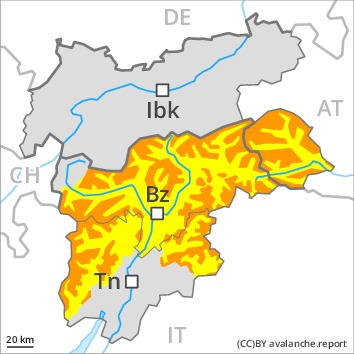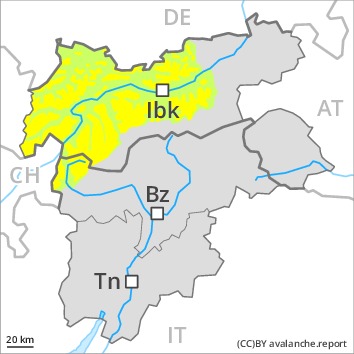
Danger level
 | treeline |
|  |
|  | ||||
|  |
|  |

Weak layers in the upper part of the snowpack necessitate caution. Fresh wind slabs require caution.
The near-surface layers of the snowpack necessitate caution and restraint. Dry avalanches can be triggered in the weakly bonded old snow and reach quite a large size. Remotely triggered avalanches are possible. Avalanche prone locations for dry avalanches are to be found on steep shady slopes, also below the tree line. The avalanche prone locations are difficult to recognise. Especially places where surface hoar has been covered with snow are treacherous. Whumpfing sounds and the formation of shooting cracks when stepping on the snowpack serve as an alarm indicating the danger. Meticulous route selection is important.
The fresh wind slabs are easy to recognise but prone to triggering. These avalanche prone locations are to be found in particular above the tree line, caution is to be exercised adjacent to ridgelines and in gullies and bowls.
In addition a latent danger of gliding avalanches exists.
Snowpack
dp.8: surface hoar blanketed with snow
dp.6: cold, loose snow and wind
Precarious weak layers exist in the top section of the snowpack. The somewhat older wind slabs are lying on surface hoar in some places.
The moderate wind will transport the loosely bonded old snow. The fresh wind slabs will be deposited on soft layers. As a consequence of low temperatures the snowpack can not consolidate.
Towards its base, the snowpack is well consolidated.
Tendency
A precarious avalanche situation will persist. As a consequence of low temperatures and the northwesterly wind, the snowpack can not consolidate.




